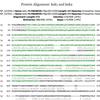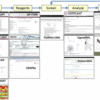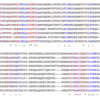Human
. 10/9/2017. “Accessing the Phenotype Gap: Enabling Systematic Investigation of Paralog Functional Complexity with CRISPR.” Dev Cell, 43, 1, Pp. 6-9.Abstract
Tutorial on DIOPT ortholog search tool scores, ranks and 'best' matches
. 6/1/2017. “MARRVEL: Integration of Human and Model Organism Genetic Resources to Facilitate Functional Annotation of the Human Genome.” Am J Hum Genet, 100, 6, Pp. 843-853.Abstract
. 8/7/2017. “Gene2Function: An Integrated Online Resource for Gene Function Discovery.” G3 (Bethesda).Abstract
. 5/3/2016. “Controllability analysis of the directed human protein interaction network identifies disease genes and drug targets.” Proc Natl Acad Sci U S A, 113, 18, Pp. 4976-81.Abstract
New automated imaging at the DRSC
. 2016. “Seipin is required for converting nascent to mature lipid droplets.” Elife, 5.Abstract
DIOPT 6.0 released -- with eggNOG and paralog searches added
Now Available: Our 2017 NAR database issue update
. 10/11/2016. “FlyRNAi.org—the database of the Drosophila RNAi screening center and transgenic RNAi project: 2017 update.” Nucleic Acids Research. Publisher's VersionAbstract
. 10/31/2016. “Loss-of-function genetic tools for animal models: cross-species and cross-platform differences.” Nat Rev Genet. Publisher's VersionAbstract
"One vs. All" a new feature in our ortholog search tool
. 2016. “CRISPR guide RNA design for research applications.” FEBS J.Abstract
. 2005. “Functional genomic analysis of the Wnt-wingless signaling pathway.” Science, 308, 5723, Pp. 826-33.Abstract





